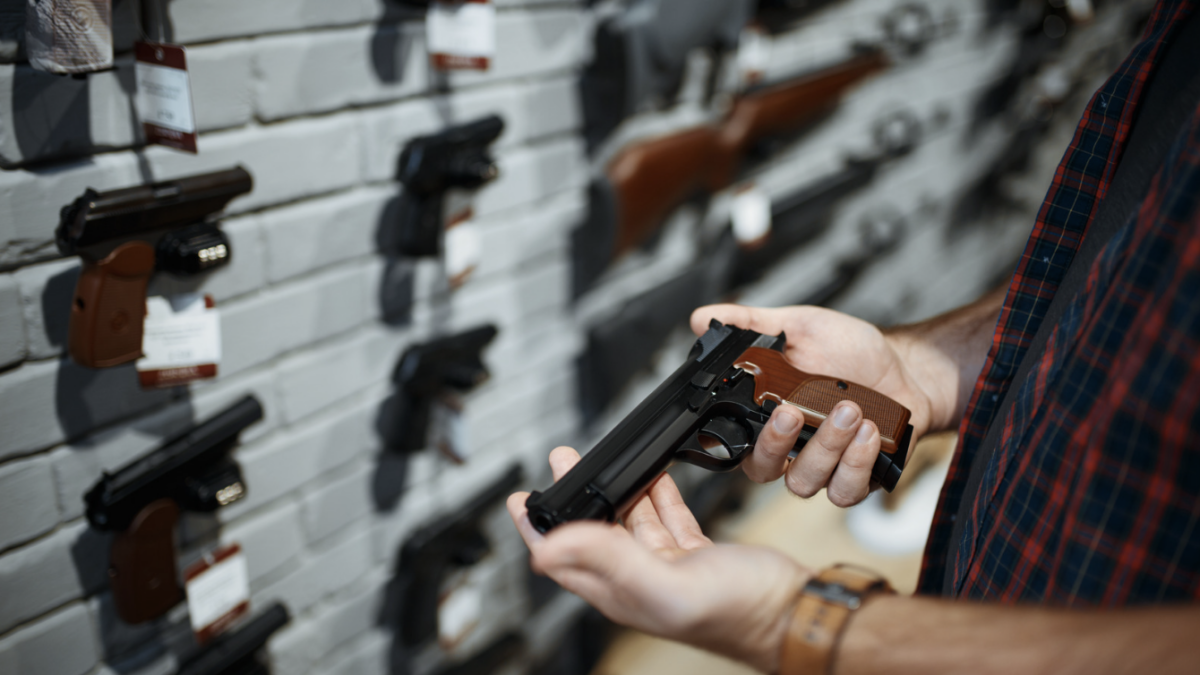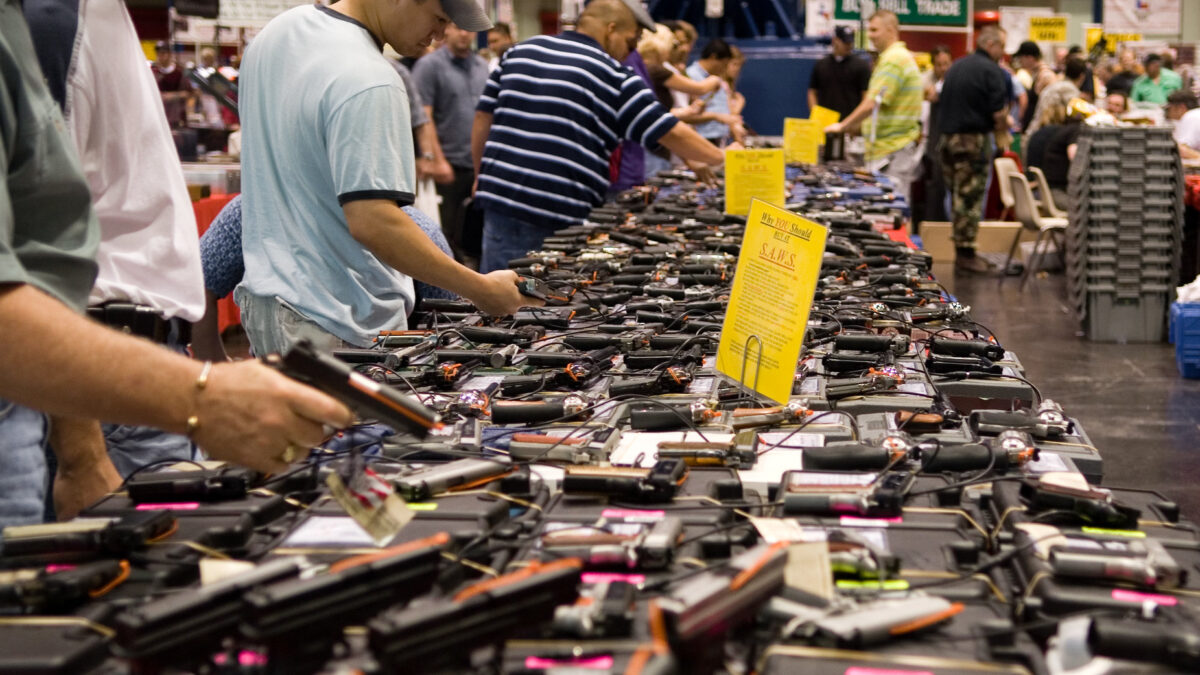
Unlike the vast majority of pundits, politicians, and late-night celebrity talk show hosts who vaguely implore Republicans to “do something,” Nick Kristof of The New York Times has taken the time to offer eight ideas he believes would help alleviate mass shootings. In fact, the headline of the article reads “Preventing Mass Shootings Like the Vegas Strip Attack.” Alas, the column doesn’t fulfill its promise, though it is useful in illustrating the problem Democrats face in the gun-control debate.
The column gets off to an inauspicious start when Kristof points to Australia’s confiscation of guns as a model for policy — which is, of course, a non-starter in a nation with more than 300 million firearms and an individual right to own them. Every time a pundit mentions Australian gun policy he is, in essence, conceding that confiscation is the ideal we should be working towards. The success of the Australian program is highly debatable, and anyone who fails to mention that the United States saw similar drops in gun crimes and homicides during the same timeframe — despite a big spike in gun ownership — is already suspect.
In any event, Kristof has eight additional ideas for us.
“1 – Impose universal background checks for anyone buying a gun. Four out of five Americans support this measure, to prevent criminals or terrorists from obtaining guns.”
This is tantamount to pleading for the existing ban on “machine guns” or “automatic weapons.” In 1993, Bill Clinton created the National Instant Background Check System. Since then, although there are some exemptions, the vast majority of gun owners go through a background check. There were 27,538,673 of them in 2016 alone (pdf). The reason Kristof throws in the word “universal,” I assume, is that he believes there are “loopholes” in this policy at gun shows and interstate purchases.
Yet, as my colleague Sean Davis has explained:
If you purchase a firearm from a federal firearms licensee (FFL) regardless of the location of the transaction — a gun store, a gun show, a gun dealer’s car trunk, etc. — that FFL must confirm that you are legally allowed to purchase that gun. That means the FFL must either run a background check on you via the federal NICS database, or confirm that you have passed a background check by examining your state-issued concealed carry permit or your government-issued purchase permit. There are zero exceptions to this federal requirement.
What’s more, Vegas shooter Stephen Paddock did not, as far as we know (and these things can change as reporting is ongoing), have a criminal record. According to numerous reports, he obtained all his firearms legally and without raising any red flags while passing numerous background checks. In fact, most of the mass shooters who have terrorized Americans in recent years didn’t have any criminal records. Most could pass background checks, and did. Some were radicalized and known to the FBI. Most were mentally anguished rather than criminally inclined, which is an exceptionally difficult thing to define, predict, or control.
It is true that occasionally the system failed. This happened in the case of Dylann Roof, who should have been stopped by a background check, but a breakdown in “paperwork and communication between a federal background check worker and state law enforcement” allowed him to purchase a handgun. Make the system we have better.
“2. Impose a minimum age limit of 21 on gun purchases. This is already the law for handgun purchases in many states, and it mirrors the law on buying alcohol.”
Well, some of us believe it’s absurd that 18-year-olds can support themselves, have families, and join the military, but are prohibited from buying a beer. But that’s another debate. Many states already have age 21 limits on purchasing guns. Not that it really matters. The vast majority of the mass shooters over the past decade were over 21. Most of them were well over 21.
The ones that weren’t, like Adam Lanza, illegally obtained their guns from legal owners. Lanza stole his guns from his mother, who had legally registered every one of them. I couldn’t find a single major mass shooting (this is typically defined as four or more people killed or injured by gunfire, which includes many criminal events that most people would not associate with what happened in Las Vegas, but that’s another story) who had legally purchased weapons as an 18- to 20-year-old. It seems dubious to suggest that passing such a law would do anything to “prevent” mass shootings.
“3. Enforce a ban on possession of guns by anyone subject to a domestic violence protection order. This is a moment when people are upset and prone to violence against their exes.”
Taking someone’s rights away because he or she is “upset” or potentially violent might work in the “Minority Report” but it is likely unconstitutional here in the real world. In fact, in some ways, a case about just this topic sparked the idea that grew into the Heller case and ended up properly codifying the Second Amendment as an individual right.
It came in 1998, when a doctor named Timothy Joe Emerson was in the midst of an acrimonious divorce and his wife requested a restraining order against him from a Texas court. At the time, Emerson had been collecting guns for years and legally owned around 30 firearms. What Emerson didn’t know was that federal law at the time forbade anyone under a domestic restraining order from possessing firearms. He was arrested. Emerson’s court-appointed lawyer argued that without any judicial finding that his client posed a danger to his wife, Emerson still had a constitutional right to own a gun. And he won. It was the Emerson decision that sparked a number of libertarian think tank legal scholars to challenge DC gun laws.
“4. Limit gun purchases by any one person to no more than, say, two a month, and tighten rules on straw purchasers who buy for criminals. Make serial numbers harder to remove.”
This is like limiting soda sizes. The idea that shooters will be stopped because they can only purchase two guns per month seems dubious considering many of these shootings have been meticulously planned, none more, it seems, than Paddock’s mass murder in Vegas. There is also the problem of arbitrarily limiting citizens from practicing their constitutional rights. This would be like arguing that we should limit columnists to practicing their freedom of speech to only two columns a week because words are mightier than the sword.
“5. Adopt microstamping of cartridges so that they can be traced to the gun that fired them, useful for solving gun crimes.”
To my understanding, every mass shooting incident has been solved. How this regulation would prevent more is unclear. The rest of Kristof’s suggestions focus on gun safety measures that have nothing to do with mass shootings.
“6. Invest in ‘smart gun’ purchases by police departments or the U.S. military, to promote their use. Such guns require a PIN or can only be fired when near a particular bracelet or other device, so that children cannot misuse them and they are less vulnerable to theft. The gun industry made a childproof gun in the 1800’s but now resists smart guns.”
This suggesting is irrelevant on a number of levels. For one, smart guns would do little or nothing to “prevent” most mass shootings. Second, no major Second Amendment advocacy group or politician I know of opposes the production or promotion of “smart guns” — they oppose the state compelling people to use them. There are a few other problems: They don’t work yet. They are impractical. They are intrusive to law-abiding gun owners.
“7. Require safe storage, to reduce theft, suicide and accidents by children.”
It’s unclear how these requirements would “prevent” mass shootings, but often the proposed safe storage legislation makes it virtually impossible for gun owners to protect themselves or their family. Regardless, many states already have such laws and every state already has laws covering negligent behavior regarding children.
There is no correlation between gun ownership and suicide rates.
“8. Invest in research to see what interventions will be more effective in reducing gun deaths. We know, for example, that alcohol and guns don’t mix, but we don’t know precisely what laws would be most effective in reducing the resulting toll. Similar investments in reducing other kinds of accidental deaths have been very effective.”
Again, there is no evidence that mass shootings are fueled by alcohol or substance abuse, but rather that they are fueled by mental illness and radicalism. There are already numerous studies regarding gun use and abuse, and one hopes others study the data, as well. But if Kristof is suggesting that the centers for Disease Control participate, the answer is that there is no reason to further politicize the agency. Because no matter how well-intentioned people try to be in this debate, that’s almost always the case. That includes Kristof’s column, which fails to offer a single idea short of confiscation that would stop mass shootings in the future.
David Harsanyi is author of the forthcoming “First Freedom: A Ride through America’s Enduring History with the Gun, From the Revolution to Today” (Threshold Editions).









